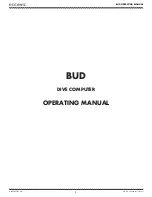
3.3.4
Evaluation of Harmonic Distortion
Using Fourier transform the instrument continuously evaluates harmonic distortion of voltages and currents up
to order 63. The calculation is performed by using a rectangular window of each measurement cycle (200 ms).
Following parameters are evaluated from the harmonic analysis:
Fundamental (= 1
st
) harmonic phase voltage:
U f h
1
Fundamental (= 1
st
) harmonic current:
If h
1
The absolute angle of the phasors of the fundamental harmonic voltage components:
ϕU
1
Phasor shift of the fundamental harmonic current phasors to
U f h
1
:
ϕI
1
The angle between the corresponding phasors of the fundamental harmonic components of voltage and
current:
4
ϕ
1
The angle between a voltage and the corresponding current phasors of the i-th order:
4
ϕ
i
Total harmonic distortion of voltage:
T HD
U
1
=
1
U
1
h
1
v
u
u
t
63
X
i
=2
U
1
h
2
i
×
100%
Total harmonic distortion of current:
T HD
I
1
=
1
I
1
h
1
v
u
u
t
63
X
i
=2
I
1
h
2
i
×
100%
Power factor (of the fundamental harmonic components):
cos
4
ϕ
1
Active power of the fundamental harmonic component:
P f h
1
=
U f h
1
×
If h
1
×
cos
4
ϕ
1
Reactive power of the fundamental harmonic component:
Qf h
1
=
U f h
1
×
If h
1
×
sin
4
ϕ
1
Three-phase active power of the fundamental harmonic components:
3
P f h
=
P f h
1
+
P f h
2
+
P f h
3
Three-phase reactive power of fundamental harmonic components:
3
Qf h
=
Qf h
1
+
Qf h
2
+
Qf h
3
Three-phase power factor of the fundamental harmonic components:
3
cos
4
ϕ
=
cos
arctan
3
Qf h
3
P f h
Power and power factors of the fundamental harmonic component (cos
ϕ
) are evaluated in 4 quadrants in
accordance with IEC 60375, see Fig. 12
19





































